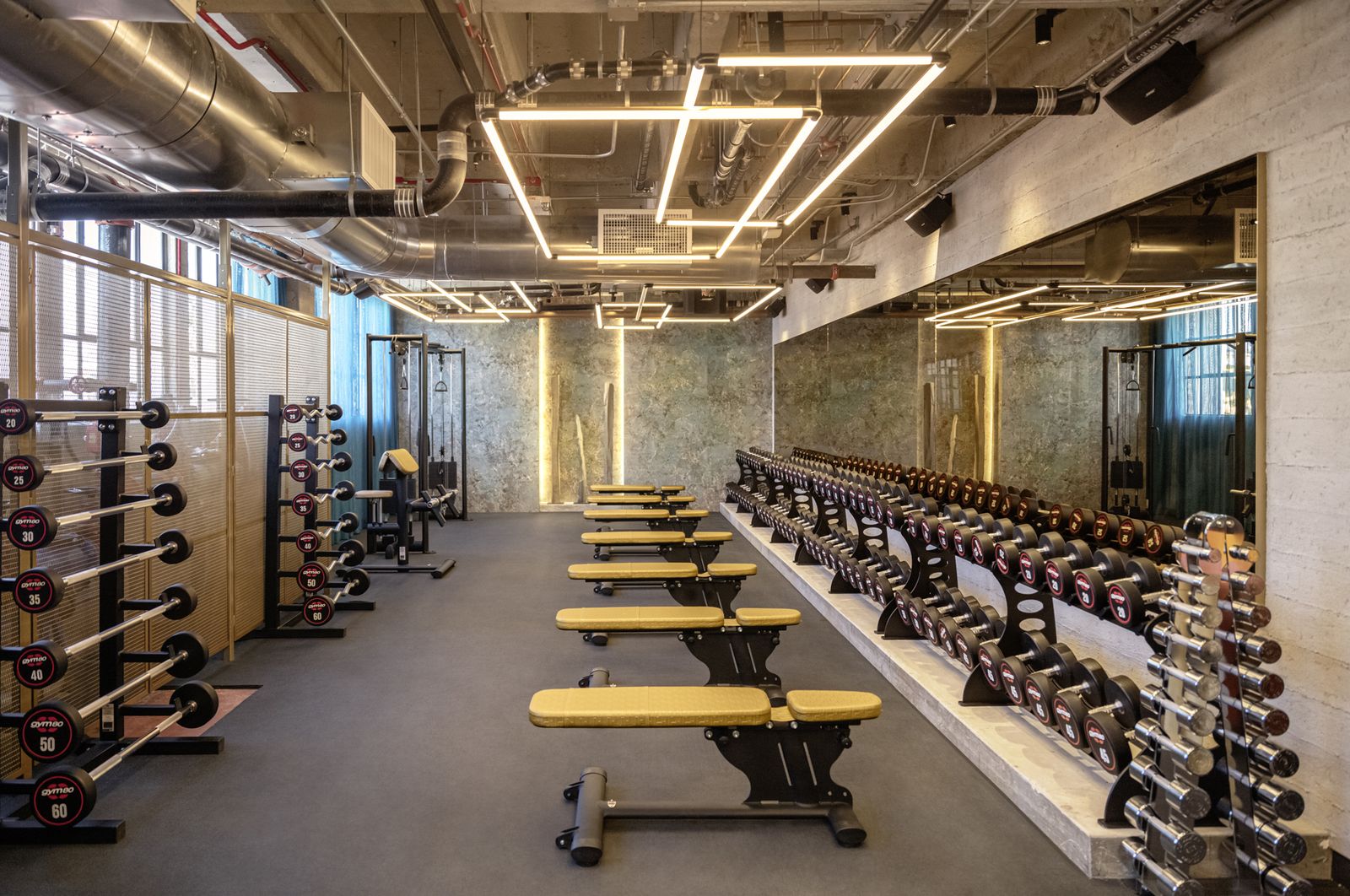The global gym industry, a powerhouse of physical and mental well-being, has undergone a seismic transformation in recent years. Far from merely recovering from the disruptions of the pandemic, it is actively reshaping itself, driven by technological innovation, evolving consumer preferences, and a broader understanding of holistic health. This article delves into the key news and trends defining this dynamic sector, exploring its challenges, opportunities, and the exciting future it promises.
A Robust Recovery and Evolving Member Expectations
After the unprecedented closures and uncertainties of 2020-2021, the gym industry has demonstrated remarkable resilience. Membership numbers are largely rebounding, and in many regions, are even surpassing pre-pandemic levels. However, this recovery is not a return to the old normal. Members now come with heightened expectations, demanding:
- Hybrid Fitness Options: The convenience of at-home workouts is here to stay. Gyms are increasingly integrating digital platforms, offering on-demand classes, live virtual sessions, and personalized training accessible anywhere. This "phygital" approach (physical + digital) is crucial for retaining members who value flexibility.
- Enhanced Cleanliness and Safety Protocols: A non-negotiable expectation, stringent hygiene practices, advanced air filtration systems, and ample sanitization stations are now standard. Members need to feel secure and protected within the facility.
- Flexibility in Membership Models: Long-term contracts are being challenged by more agile options like pay-as-you-go, short-term packages, and tiered memberships that cater to varying commitment levels and budgets.
- Community and Social Connection: While technology offers convenience, the desire for human interaction and a sense of belonging remains a powerful draw. Gyms are investing in creating vibrant communities through social events, challenges, and group fitness classes.
The Digital Revolution: Technology at the Forefront
Technology is no longer just a supplement; it’s an integral part of the modern gym experience. Its pervasive influence is evident in several key areas:
- Wearables and Data Integration: Smartwatches, fitness trackers, and other wearables are generating vast amounts of personal health data. Gyms are exploring ways to integrate this data to offer more personalized coaching, track progress, and tailor workout recommendations. This moves beyond mere step counting to analyzing heart rate variability, sleep patterns, and recovery metrics.
- Artificial Intelligence (AI) and Machine Learning (ML): AI is powering personalized workout programs, analyzing member behavior to predict churn, optimizing class schedules, and even providing real-time feedback during exercises. From AI-driven virtual coaches to smart equipment that adjusts resistance based on performance, the possibilities are expanding rapidly.
- Virtual and Augmented Reality (VR/AR) Workouts: Immersive VR experiences are transforming stationary bikes and treadmills into virtual journeys through exotic landscapes or competitive races. AR applications can overlay workout instructions onto a user’s environment, making home workouts more engaging and interactive.
- Gamification: Turning fitness into a game through points, leaderboards, badges, and challenges is proving highly effective in boosting engagement and motivation, particularly among younger demographics.
- Smart Equipment and IoT (Internet of Things): Connected strength and cardio machines automatically track reps, sets, and calories burned, syncing data with member profiles and providing instant feedback. This streamlines the workout experience and offers valuable insights for both members and trainers.
- Seamless Digital Member Journeys: From online sign-ups and class bookings to digital locker access and personalized app interfaces, the entire member journey is becoming increasingly digital, enhancing convenience and efficiency.
Beyond Brawn: The Rise of Holistic Wellness
The definition of "fitness" has broadened considerably. It’s no longer solely about physical aesthetics or strength; it encompasses a comprehensive approach to well-being. This shift is driving gyms to offer:
- Mental Health Support: Recognizing the intrinsic link between physical activity and mental well-being, some forward-thinking gyms are integrating services like meditation zones, mindfulness classes, stress reduction workshops, and even partnerships with mental health professionals.
- Nutrition and Dietary Guidance: On-site dieticians, personalized meal planning services, and healthy food and beverage options are becoming more common, addressing the "what you eat" alongside "how you move."
- Recovery and Regeneration: Services like cryotherapy, infrared saunas, massage therapy, stretching zones, and specialized recovery classes are gaining traction as members prioritize injury prevention and optimized performance.
- Sleep Optimization: While less direct, some wellness brands are exploring how to integrate sleep tracking and advice into their broader offerings, acknowledging its critical role in overall health.
- Community and Social Connection: Combatting loneliness and fostering a sense of belonging is a key element of holistic wellness. Gyms are actively cultivating spaces where members can connect, share experiences, and build supportive relationships beyond just working out.
Business Model Innovations and Market Dynamics
The gym industry is witnessing significant evolution in its business models and market structure:
- Boutique Fitness Boom: Highly specialized studios (e.g., HIIT, Pilates, Yoga, cycling, boxing) continue to thrive, offering curated experiences, expert instruction, and a strong sense of community. Their success lies in their ability to create premium, niche offerings that resonate deeply with specific member segments.
- Big Box Adaptation: Traditional large-scale gyms are responding by diversifying their offerings, incorporating boutique-style classes, premium amenities, dedicated functional training zones, and improved digital platforms to compete effectively. Many are adopting a "club-within-a-club" model.
- Franchising Expansion: Franchising remains a popular and scalable growth strategy for both boutique and traditional gym concepts, allowing for rapid expansion and standardized quality across locations.
- Mergers and Acquisitions (M&A): The industry is seeing consolidation as larger players acquire smaller, innovative brands to expand their market share, technology stack, or specialized service offerings. This trend suggests a maturation of the market and a drive for efficiency.
- Focus on Value Proposition: With increasing competition and potential economic headwinds, gyms are intensely focused on clearly articulating their unique value proposition, whether it’s affordability, luxury, specialization, or community.
Staffing, Retention, and the Human Element
Despite the technological advancements, the human element remains paramount in the gym industry. News in this area often revolves around:
- Talent Acquisition and Retention: Finding and keeping qualified trainers, coaches, and front-desk staff is a persistent challenge. The industry is focusing on offering competitive wages, professional development opportunities, and positive work environments.
- Upskilling and Certification: The demand for highly skilled and certified professionals is growing, particularly in areas like specialized training, holistic wellness coaching, and technology integration.
- The Role of the Personal Trainer: While AI can personalize workouts, the empathy, motivation, and expertise of a human personal trainer remain irreplaceable for many members, especially for complex goals or rehabilitation.
- Member Experience Excellence: Beyond workouts, the overall member experience – from a friendly greeting to efficient problem-solving – is crucial for retention. Staff play a pivotal role in creating a welcoming and supportive atmosphere.
Sustainability and Social Responsibility
Increasingly, gyms are recognizing their role beyond just fitness and are incorporating environmental, social, and governance (ESG) principles into their operations:
- Eco-Friendly Practices: This includes using energy-efficient equipment, installing LED lighting, reducing water consumption, implementing recycling programs, and sourcing sustainable products. Some gyms are even experimenting with kinetic energy generation from workouts.
- Community Engagement: Local outreach programs, charity events, and partnerships with community organizations demonstrate a commitment to social responsibility.
- Diversity and Inclusion: Creating welcoming and inclusive environments for people of all ages, body types, abilities, and backgrounds is becoming a focus, reflecting broader societal values.
Navigating Economic Headwinds and Future Growth
While the industry is robust, it’s not immune to broader economic forces:
- Inflation and Discretionary Spending: Rising costs of living can impact discretionary spending on gym memberships. Gyms must demonstrate clear value and potentially offer more flexible pricing.
- Subscription Fatigue: Consumers are increasingly scrutinizing their monthly subscriptions. Gyms need to justify their cost with compelling offerings and strong member engagement.
- Preventative Health Integration: Governments and healthcare providers are increasingly recognizing the role of physical activity in preventative health. This could open doors for partnerships and subsidies, positioning gyms as essential healthcare partners.
- Emerging Markets: Significant growth potential exists in developing economies where disposable incomes are rising and awareness of health and fitness benefits is increasing.
Conclusion: Agility and Innovation as the North Star
The gym industry is at a crucial juncture, characterized by rapid change and immense opportunity. The news from this sector consistently points to a future where agility, innovation, and a deep understanding of evolving consumer needs will be paramount. Success will belong to those who can seamlessly integrate technology with human connection, offer holistic wellness solutions, adapt their business models, and commit to sustainability and community. The gym of tomorrow will not just be a place to work out; it will be a dynamic hub for comprehensive well-being, an essential pillar in the broader health ecosystem. The journey of reshaping wellness is well underway, promising an exciting and healthier future for individuals worldwide.

